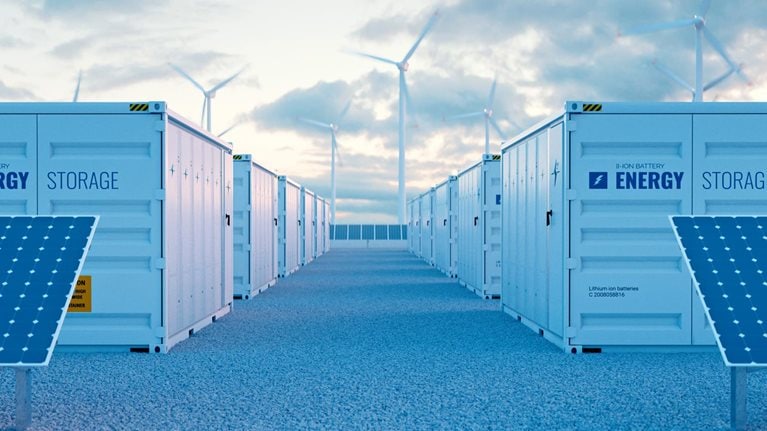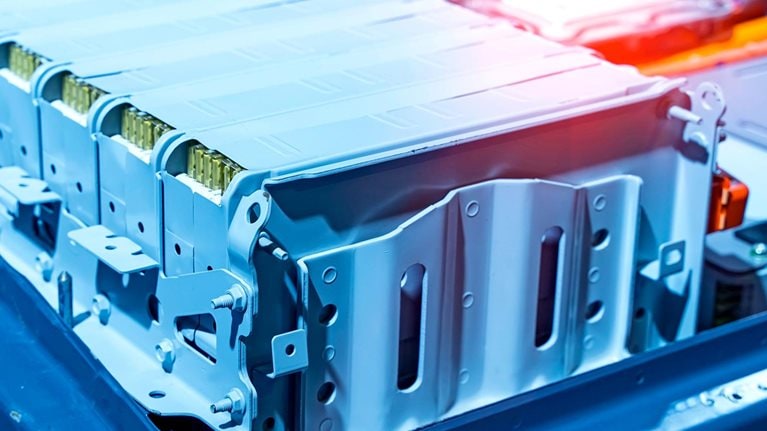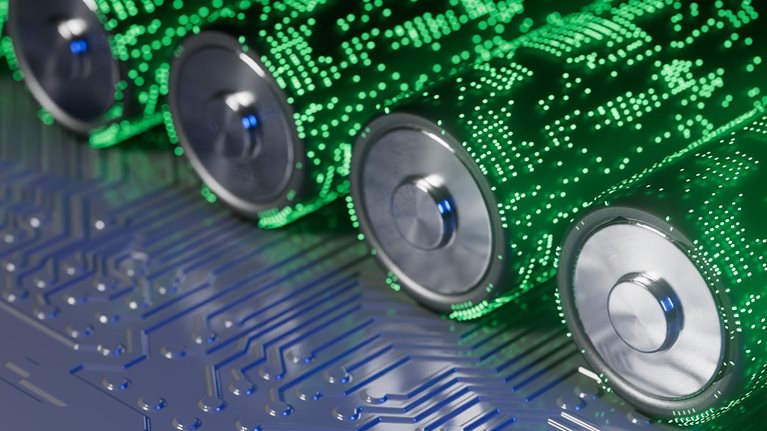The speed of battery electric vehicle (BEV) uptake—while still not categorically breakneck—is enough to render it one of the fastest-growing segments in the automotive industry.1 Our projections show more than 200 new battery cell factories will be built by 2030 to keep up with rising demand. Overall, the market for cell components—comprising cathodes and anodes, separators, electrolytes, and cell packaging—is expected to grow by 19 percent per annum until 2030, reaching more than $250 billion.
This rapid growth opens a window of opportunity for cell component suppliers, start-ups, and new entrants, particularly in Europe and North America. Across both regions, industry and governments alike are strongly inclined to nearshore—or bring supply closer to home—in an effort to derisk supply chains and secure control over intellectual property. Despite this opportunity, however, current localized production would need to increase significantly to ensure supply meets demand by 2030.
Suppliers in the battery component sector thus face challenges regarding commercial market entry, the necessity for substantial funding, and a rapidly evolving technological landscape. Moreover, local suppliers face a highly competitive market dominated by incumbent suppliers, mostly in Asia. And environmental and regulatory factors pose risks that could disrupt production, increase costs, and create negative perceptions of the sector.
Cell component companies that seize the opportunity to meet the demand for local supply will place bets strategically from the start, build a backbone for success, and efficiently deliver on capacity additions.
An attractive market: The global state of cell components
Today, Asia leads the cell component market in annual production, measured in metric kilotons. The region produces 96 and 95 percent of cathode and anode active materials, respectively, and 90 and 95 percent of electrolyte and separator material, respectively (see sidebar, “An overview of the battery industry in Asia”). By contrast, Europe and North America have modest presences in the sector.
According to the typical cost breakdown of a conventional lithium-ion battery cell system, cathode is the largest category, at approximately 40 percent (Exhibit 1). In most cases, the active material in cathodes is a transition metal (such as nickel, cobalt, manganese, or aluminum), oxide (NMC),2 or lithium iron phosphate (LFP). Cathodes also contain lithium ions, which are then stored during charge in the graphite anode material.

Decarbonizing battery component production could be a competitive advantage in appealing to OEM buyers and is necessary to meet sustainability goals and regulations. Anode and cathode production represents approximately 33 percent of total life cycle CO2 emissions.
Together, four battery cell components—cathodes and anodes, separators, electrolytes, and cell packaging—are the main drivers for cell performance, particularly as it relates to energy density, cycle life, charging rate, and safety. Europe accounts for only 3 percent of cathode material production and 2 percent of anode production, while North America produces less than 1 percent of cathode active material and 5 percent of anode material. Just 7 percent of electrolyte production and 4 percent of separator production is housed in both regions combined. This considerable gap between demand for cell components and local supply signals growth opportunities in the battery component market.
The global revenue pool of the core cell components is expected to continue growing by around 17 percent a year through 2030 (Exhibit 2). Future technological developments (new anode materials and solid-state electrolytes) will only increase the importance of battery components.

In the battery manufacturing value chain, EBITDA margins vary by stage (Exhibit 3). Raw materials make up the largest category (20 to 40 percent), followed by cell components (10 to 30 percent), cell production (approximately 5 to 10 percent), battery packing and integration (5 to 10 percent), and recycling (5 to 15 percent). The relatively higher margins for cell components can be attributed to their differentiation potential—advanced or unique components can command higher prices—as well as their small share in the overall cost of an EV. These dynamics can enable higher margins for cell component manufacturers without significantly affecting the final price for consumers.

Untapped potential for new cell-component suppliers in Europe and North America
By 2030, Europe and North America are each expected to house approximately 20 percent of global battery cell production. In contrast, both regions combined are forecast to hold anywhere from 5 to 10 percent of global cell component capacity, lagging further behind incumbents in Asia—specifically in separator and electrolyte components (Exhibit 4). As a result of this supply shortage, the regions will likely need to import locally produced core cell components.

As more gigafactories are built outside of Asia, the focus of the global market is expected to become regional.3 This shift is driven by new legislation that provides incentives for the localization of battery cell and component production—including subsidies that are part of the US Inflation Reduction Act (IRA) and the newly established EU Green Deal Industrial Plan (GDIP)—as well as the desire for local partnerships and codevelopment between cell component suppliers and cell producers.
Asia incumbents: First movers into European and North American markets
The increased need for supply to Europe and North America has triggered some Asia-based incumbents to expand their production footprints in these regions (Exhibit 5). Since 2021, cathode and electrolyte manufacturing are leading this trend, with ten to 20 new footprint announcements. These components are particularly well suited to local sourcing given their sensitivity to moisture and contamination.

Going forward, this dynamic is expected to accelerate, with four leading supplier archetypes likely to shape the European and North American markets: start-ups, upstream companies, downstream companies, and established companies from other industries (Exhibit 6).

Established cell component manufacturers will likely venture into new territories across regions and products, building on preexisting local partnerships to manage regional complexities, such as construction permitting. An electrolyte manufacturer in China, for instance, recently partnered with a chemical supplier in Europe, leveraging an existing facility to produce its electrolytes. Beyond regional moves, automotive OEMs and cell manufacturers are also expected to continue trending toward vertical integration, from raw materials to recycling.
Start-ups, meanwhile, will continue to be pivotal in shaping the components landscape and industrializing cutting-edge technologies. Trailblazers have already reached the scale-up stage and are actively deploying advanced anode technologies with OEMs.
Seizing the battery component opportunity and overcoming the challenges
Notable challenges in the battery cell component industry in Europe and North America include overcoming market entry hurdles, securing substantial funding to set up, ensuring capital excellence and strategic talent acquisition, adapting to new legislation promoting cell component localization, and staying ahead of imminent technological advancements.
Market-entry hurdles in winning new customers
Aspiring entrants to the battery component market face several formidable barriers to entry, the most notable of which are the lengthy timelines required for battery components to be tested, validated, and approved before securing high-volume orders. A strategic, phased approach may involve first validating the new entrant’s product performance and reliability with prospective offtakers. Once the product has gained traction with potential customers, the real test begins: moving from pilot to factory scale. Companies can invest in building a factory up front, even before securing high-volume orders, knowing that the facility itself will undergo a qualification period that often lasts a year.
Entrants will also need to contend with lock-in effects and their impact on product properties. Component changes can significantly affect the product performance and production process, resulting in risks to quality and reliability when changing suppliers.
At the same time, incumbents continue to scale across regions. Beyond proving that they can offer a compelling and reliable product, companies will likely need to compete with aggressive commercial packages from incumbents. In our experience, many new companies haven’t optimized the bill of material or are not yet certain in their ability to produce at low cost in new facilities. In these cases, innovative commercial approaches can help players persevere.
Substantial investment to build production facilities
Profitable growth will require battery materials and component suppliers—whether they are disruptors or established companies—to allocate capital for new processing facilities prudently while navigating the challenges of uncertain battery chemistries.
Localizing the battery supply chain in Europe and North America will likely require substantial funding. According to our analysis, the components supply chain for cathode and anode active materials, electrolytes, and separators is expected to be worth more than $35 billion annually in North America, but it will require investments of approximately $25 billion to scale. Potential funding sources include regulators, automotive OEMs, cell manufacturers, and private investors.
In the United States, the Department of Energy has earmarked up to $3.5 billion for battery manufacturing, which includes funding for new, retrofitted, and expanded facilities for various components of battery-grade materials and manufacturing processes.4 This funding is part of a larger $6 billion package aimed at accelerating decarbonization projects in energy-intensive industries.5
At the same time, the European Commission has established a dedicated instrument under the Innovation Fund to support the battery value chain, allocating up to €3 billion.6 This funding is targeted at enhancing the middle of the battery value chain, particularly cell production, and could stimulate investments in other parts of the value chain.
Strategic talent
Increasing the talent base will be a crucial element of growth—but labor shortages for critical trades in the United States could increase risks around time and cost. In fact, cost overruns on the average project can approach $1.2 billion—79 percent of the initial budget—and delays can run from six months to two years.7 To scale accordingly, manufacturers can adopt robust sourcing strategies when hiring and effective optimization practices to manage processes.
New legislation encouraging cell component localization in North America and Europe
According to McKinsey’s Global Energy Perspective 2023, EVs are three to four times more energy efficient than internal-combustion-engine vehicles and will therefore play a critical role in lowering emissions.8 However, battery production is not free of emissions and is subject to government regulations that vary by jurisdiction. For example, suppliers of cathode active materials in the United States will need to closely manage their nickel emissions to comply with air quality regulations. And global manufacturers of cathode active materials will need to adapt designs to be compliant with local regulations if they wish to produce in North America.
The IRA in the United States and the GDIP in the European Union are expected to enhance local investment in the battery value chain. At the same time, they reflect those regions’ environmental regulations, which are more rigorous than those in Asia. In this regulatory environment, leveraging renewable energy sources offers a significant advantage and has already been adopted by many European suppliers.
IRA subsidies can be divided into two pillars. The first pillar focuses on cell component subsidies, including incentives for battery manufacturing and clean vehicle tax credits. The second pillar consists of manufacturing credits and localization requirements promoting domestic battery cell, module, and EV production, including sourcing of critical minerals. Notably, an increasing share of critical minerals will need to come from mining, refining, or recycling—from 40 percent of the battery component value in 2023 to 80 percent in 2029.9 To stay compliant and competitive, battery cell manufacturers should monitor updates, adjust strategies accordingly, and invest in R&D to minimize dependence on regulated minerals.
For its part, the EU GDIP aims to foster gigafactory localization and support the growth of the battery industry to meet 40 percent of European demand by 2030.10 In addition, the European Union has established instruments to speed up access to state aid from the European Sovereignty Fund and the Temporary Crisis and Transition Framework (TCTF).11 Within the TCTF, the European Union provides €150 million to €350 million in funding as an investment phase subsidy, which the member states can increase to match state aid offered by non-European locations. This essentially provides ad hoc support to companies at risk of diverting investments to locations outside the European Union.
Technology evolutions on the horizon
Battery chemistries are expected to evolve considerably leading up to 2030, which could require North American and European battery component players to invest in targeted technology and research. In a competitive market with limited resources, these investments could have immediate cash and profitability effects as well as long-term viability risks if they fail to scale.
Primary shifts facing the sector include the following:
- After reaching cost competitiveness, silicon and lithium-metal anodes are poised to gain market share from synthetic and natural graphite in the long term.
- The cathode market remains in flux in the mid to long term, with ultrahigh nickel-content cathodes competing against LFP, lithium manganese (nickel) oxide, lithium sulfur, and lithium air, among other chemistries.
- Liquid electrolytes face risk if solid-state electrolytes are successfully industrialized; even hybrid solid-state cell chemistries will require advanced or semisolid electrolytes.
- Ultrahigh-molecular-weight polyethylene (UHPE) wet-process-coated separators could make way for ceramic separators in future cell designs.
The ever-evolving nature of these chemistries means that suppliers will likely need robust R&D and manufacturing strategies that propel plant utilization while accounting for different chemistries or processing technologies. Considerations could include codevelopment, R&D partnerships, and M&A. In turn, battery material and component suppliers are likely to face cross-region growth challenges, ranging from the regional penetration of cell chemistries to devising cross-region commercial strategies.
Enablers: Standing up a successful battery component business
From start-up to scale-up, leading suppliers often focus on three enablers: placing bets strategically from the start, building a backbone for success, and efficiently delivering on capacity additions.
Place bets strategically from the start
Scaling capacity can help companies produce battery materials and components while simultaneously boosting R&D. Placing these types of bets often requires strategic and disciplined planning across the following four dimensions:
Pursue a focused technology road map while pushing the boundaries. Battery technology is rapidly improving, which means suppliers are continuously innovating rather than pursuing “one hit wonders.” Leaders typically focus on a set of real options and maximize flexibility to ensure plant utilization regardless of which technologies take hold.
Create a capital allocation plan and navigate capital market uncertainties. As capital availability tightens, efficient growth strategies are taking primacy over growth at all costs. In a dynamic tech environment, carefully considered capital allocation plans can help minimize downside risk and enable the upside.
Avoid an empire-building approach to geographical expansion. Start deliberately and launch in one market. Prioritize markets that are closer, more affordable, and more familiar until a proven playbook is in place for sustainable operations and positive unit economics.
Craft a robust go-to-market strategy. Consider product qualification complexities and customer timelines when charting pathways to securing offtake agreements.
Build a backbone for success
Battery component leaders often establish resilient execution engines. The following best practices can help build the type of backbone necessary for success:
Establish a competitive moat. It can take as long as six months for cell component products to qualify with new customers, which means component performance and purchasing should be addressed without delay. Furthermore, many customers are performance focused and apply stringent quality control.
Forge strategic local partnerships. Partnerships can help companies navigate the local complexities of gaining a foothold and standing up local supply chains. For stable scaling, new partnerships should be established early in the entry or expansion process.
Develop a robust talent strategy. The battery talent pool in Europe and North America is growing, but not fast enough to meet the rising demand for skilled professionals in cell and component production. A robust talent strategy can help overcome these challenges.
Leverage local environmental and regulatory constraints and opportunities. Consider that US and EU regulations are often stricter than those in Asia. In response, companies can aim to take advantage of US regulatory push factors that encourage local investment near sources.
Efficiently deliver on capacity additions
To efficiently deliver on capacity additions, companies can apply the following successful precedents in cell component production:
Double down on capital project delivery. Effective strategies for managing the firm’s financial resources can be implemented throughout the delivery life cycle, from planning to completion. This means focusing on essentials such as factory design, construction schedule optimization, and structures for governance and performance management. In addition, schedule and cost risks can be mitigated with the same rigor used to manage production line processes.
Establish new local supply chains early. This is important not only for the input materials of cell components but also for production equipment. Sourcing production equipment for core cell components has lead times of up to two years, so it should be completed early in the process.
Plan for, and focus resources on, ramp-up. Ramping up a new component manufacturing facility is a make-or-break moment. Leaders typically go all in to methodically tackle concerns regarding quality and overall equipment effectiveness and document learnings for future ramp-ups.
Move quickly. Swift decision making, rapid implementation, agility, and a culture of urgency are often critical elements for maintaining a competitive edge.
Swift action is imperative to meet the demand for local battery cell component supply—and the window of opportunity is just beginning to open for those that can meet the need in Europe and North America. Making the right moves early can mean the difference between lagging behind or staying ahead of the curve.


